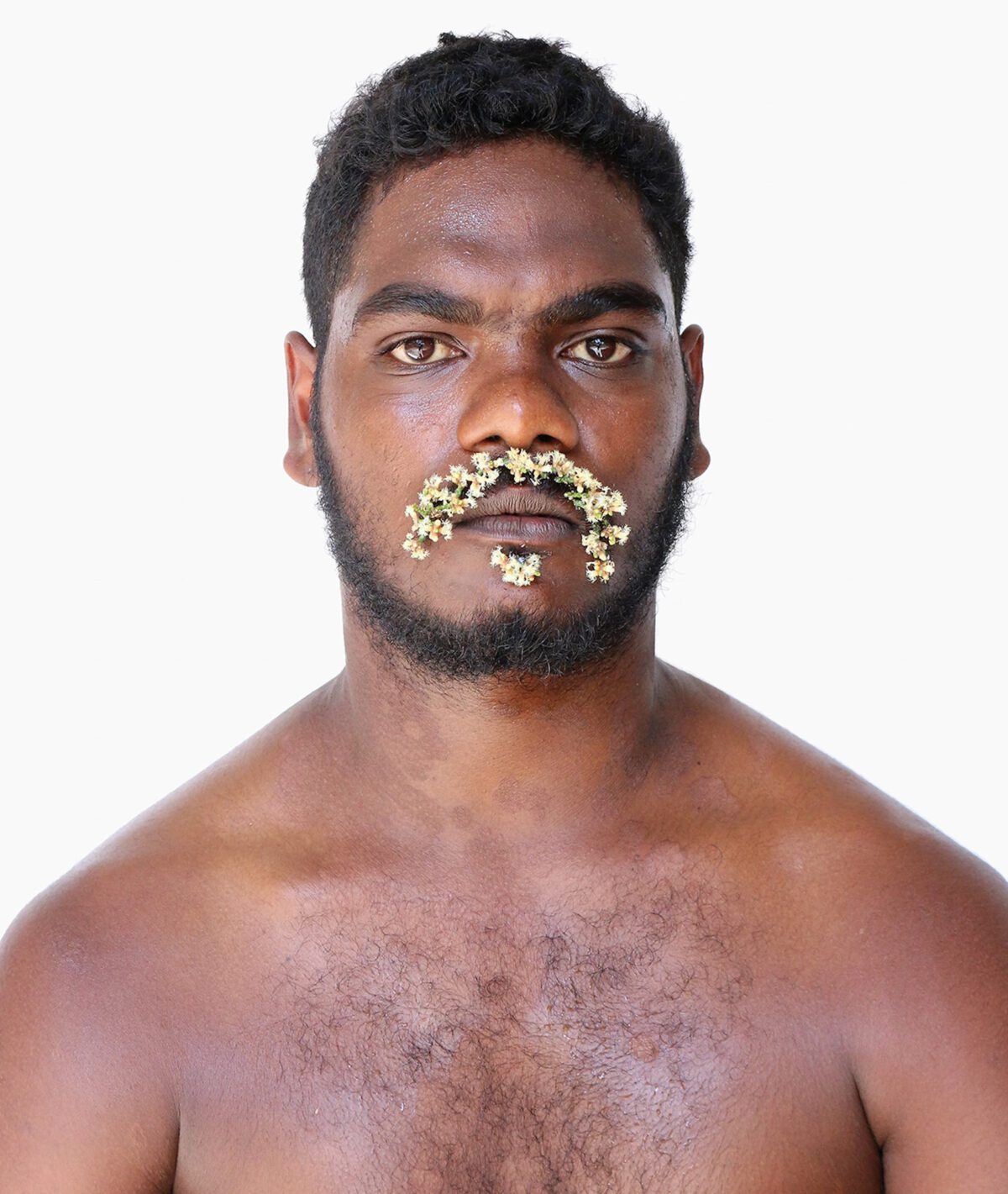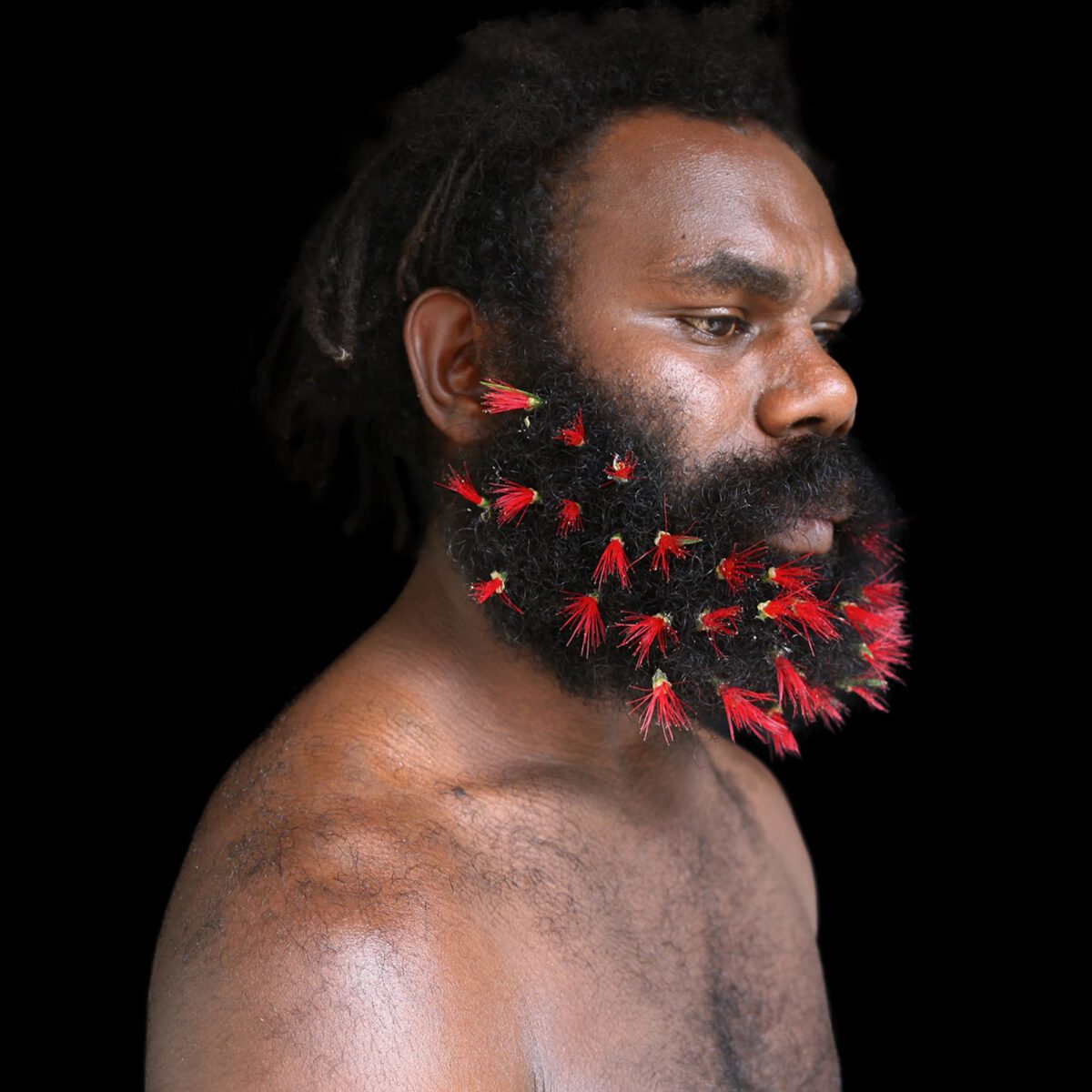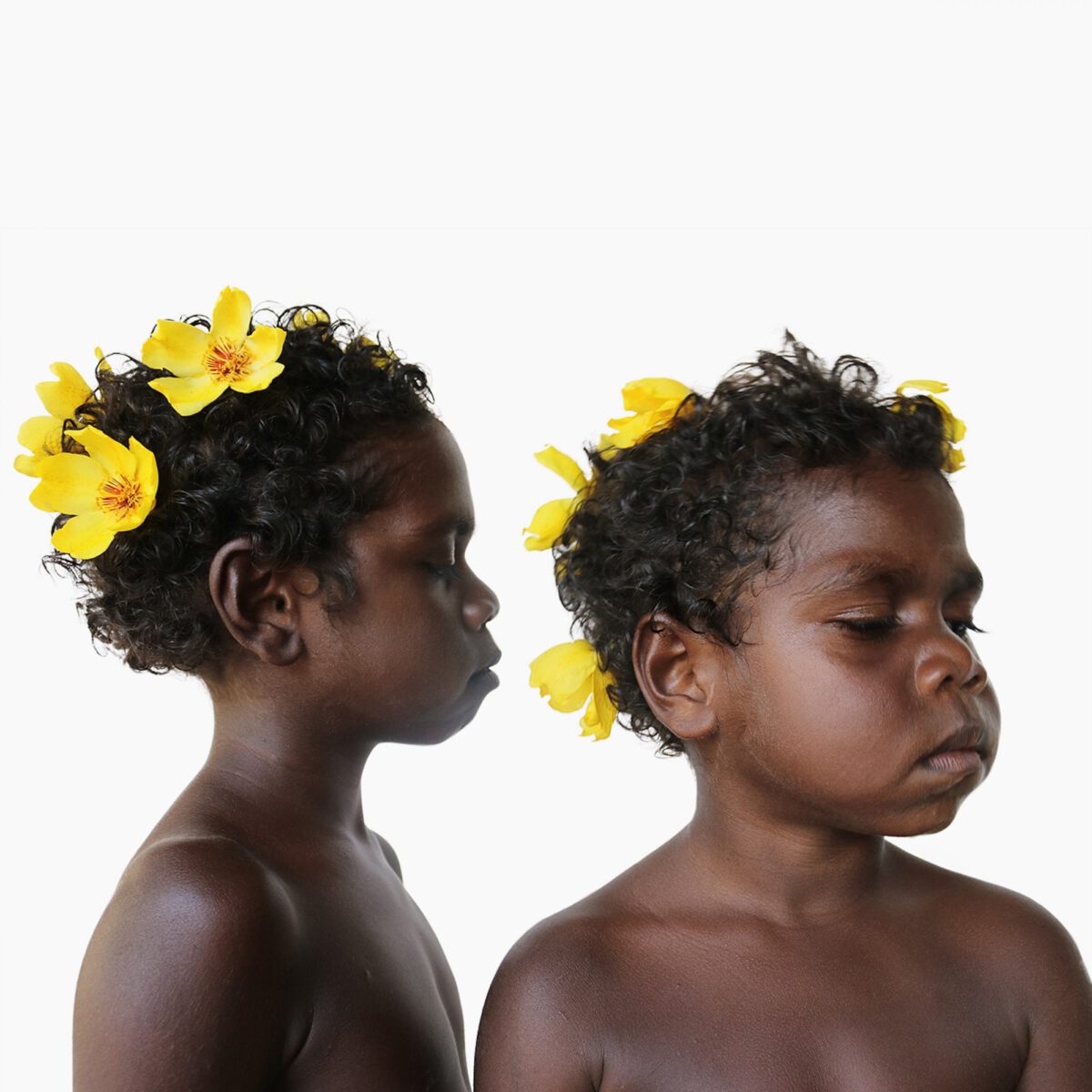A Warrior without a Weapon










The photographic series ‘A Warrior without a Weapon’ aims to break negative stereotypical representations of Australian Indigenous men in the public domain by affirming that that they too can be sensitive and caring. Naomi Hobson has witnessed the harm that these representations can cause in communities and has worked with members of the Lockhart River Men’s Group to produce the series.
In a defiant gesture against on-field racism 25 years ago, Noongar AFL player Nicky Winmar lifted his jersey, pointed to his bare torso and said ‘I’m black and proud to be black’. In the intimate intergenerational studio portraits of eleven Kaantju and Umpila boys, men and elders, they too pose shirtless, connecting with Winmar’s stand.
Each on a field of black or white, the men and their adornments glow. Flowers local to the Coen area are carefully positioned in the men’s facial hair, and on top of the heads of the young boys, signalling prosperity, life and beauty. While these floral arrangements show a nurturing side, they are also a clear reference of cultural identity. Adorning a beard with flowers is an acknowledgement of a ‘cult hero’, who is known among the locals of Coen, amplifying the narrative of a warrior without a weapon.
While Winmar’s statement was a reactionary protest and Hobson’s portraits do not share the same impulsive defiant energy, they share a similar narrative — of publicly questioning prejudice, correcting the misleading portrayals of Indigenous people, particularly men, in Australian society and demonstrating pride in culture.




